Pace Layers [Framework of the Day]
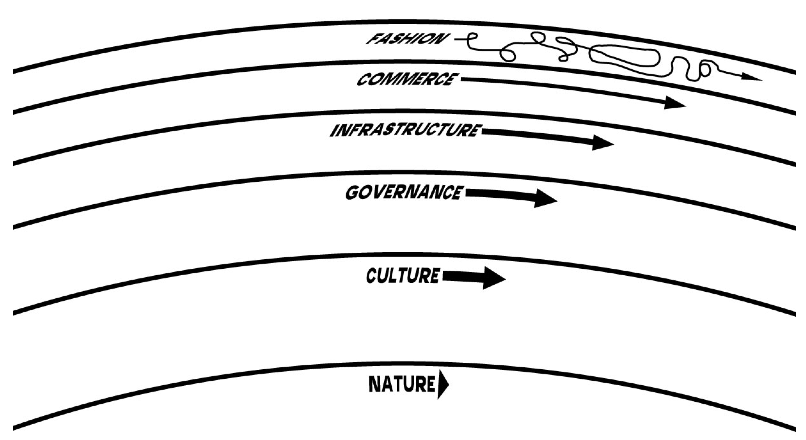 This one comes from Stewart Brand and is a way to explain the different speed various layers of society moves. The outer layer, fashion, is the quickest, while the innermost layer, nature, moves most slowly. Each layer interacts with one another as inventions and ideas get digested. As Brand explains:
This one comes from Stewart Brand and is a way to explain the different speed various layers of society moves. The outer layer, fashion, is the quickest, while the innermost layer, nature, moves most slowly. Each layer interacts with one another as inventions and ideas get digested. As Brand explains:
The job of fashion and art is to be froth—quick, irrelevant, engaging, self-preoccupied, and cruel. Try this! No, no, try this! It is culture cut free to experiment as creatively and irresponsibly as the society can bear. From all that variety comes driving energy for commerce (the annual model change in automobiles) and the occasional good idea or practice that sifts down to improve deeper levels, such as governance becoming responsive to opinion polls, or culture gradually accepting "multiculturalism" as structure instead of just entertainment.
Brand's inspiration for the framework came from an architect named Frank Duffy who encouraged builders not to think of a building as a single entity, but as a set of layers operating at different timescales. Duffy included four timescales: Shell, services, scenery, and sets (represented below).
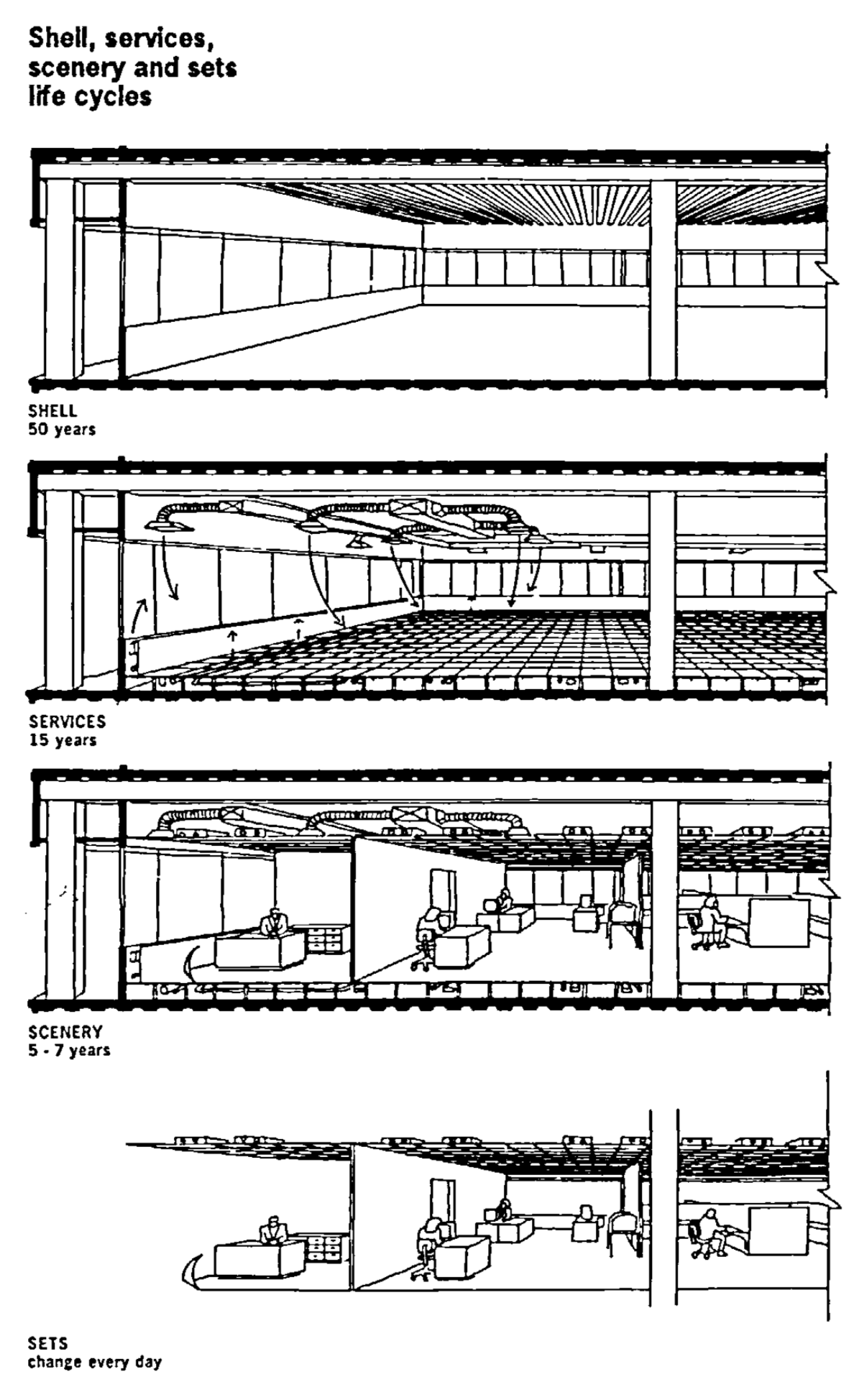
Brand picked up on Duffy's work and adapted it to a kind of proto-pace layer framework in his 1994 book How Buildings Learn: What Happens After They're Built, expanding it to six S's and including this handy diagram:
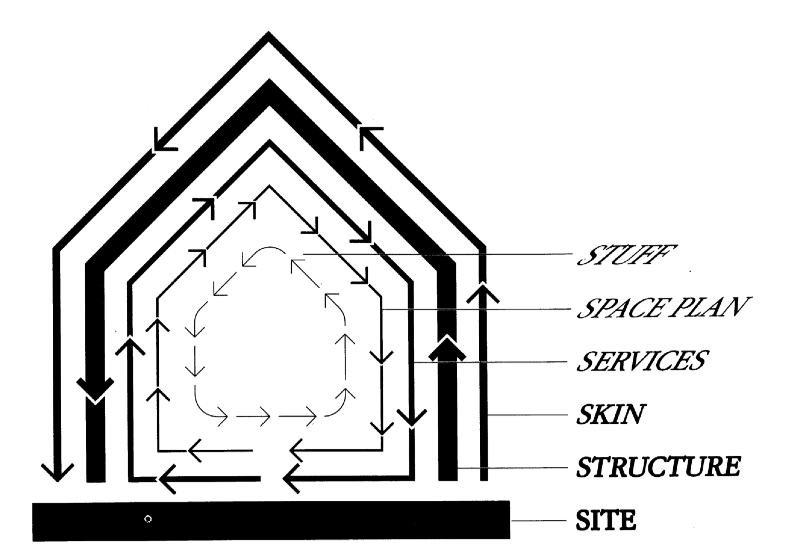
Brand eventually adapted that into the pace layer framework at the top in his 2008 book The Clock of the Long Now: Time and Responsibility (the chapter on pace layers was edited and republished last year in MIT's Journal of Design and Science). If you want more, here's a great writeup from Eric Nehrlich on a conversation about pace layers between Brand and Paul Saffo. Nehrlich calls out this slide from the presentation, which is quite helpful for understanding how the layers work:
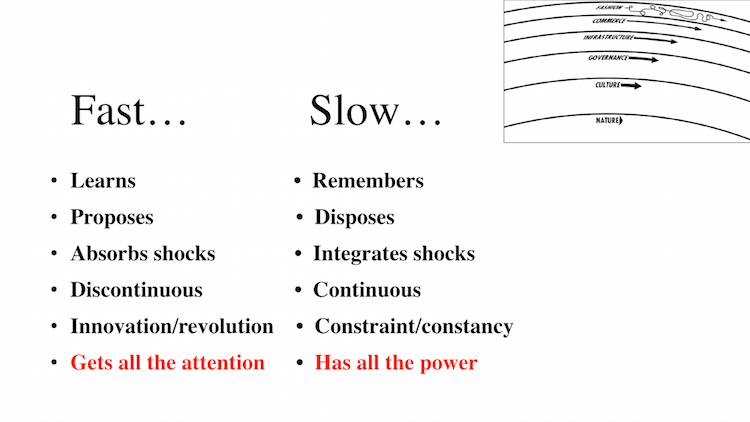
(The whole talk is posted at the Long Now Blog if you're so inclined.)
The framework has been picked up and adapted by many, but one of the more notable versions for me comes from Gartner as a way to think about your enterprise software strategy. They break enterprise software into three "layers":
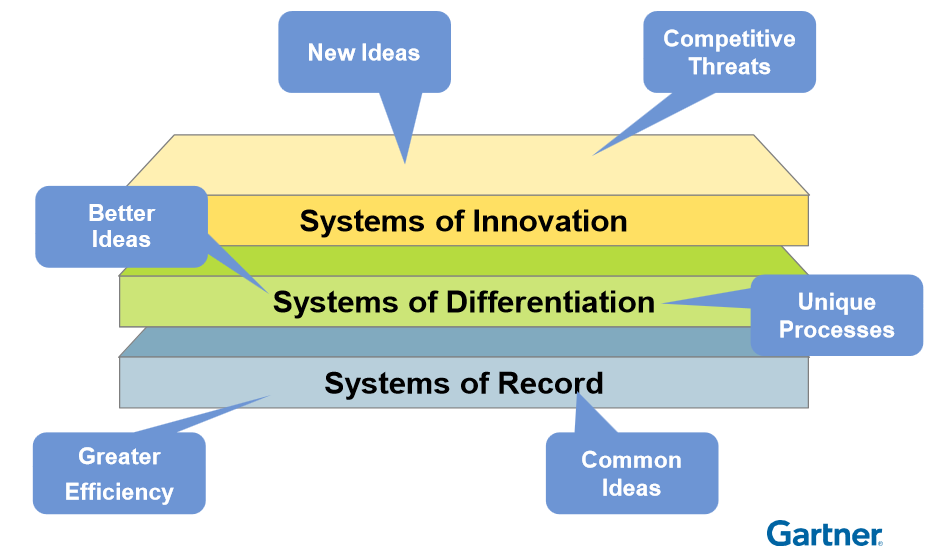
- Systems of Record — Established packaged applications or legacy homegrown systems that support core transaction processing and manage the organization's critical master data. The rate of change is low, because the processes are well-established and common to most organizations, and often are subject to regulatory requirements. - Systems of Differentiation — Applications that enable unique company processes or industry-specific capabilities. They have a medium life cycle (one to three years), but need to be reconfigured frequently to accommodate changing business practices or customer requirements. - Systems of Innovation — New applications that are built on an ad hoc basis to address new business requirements or opportunities. These are typically short life cycle projects (zero to 12 months) using departmental or outside resources and consumer-grade technologies.
All in all, the overarching shearing/pace layers framework (many layers which interact with each other and operate at different speeds) is something I've found useful in various spheres in addition to the society, architecture, and enterprise software examples above. Inside a company, for instance, you conduct various activities that exist in a similar set of layers ranging from long-term planning and brand building to quarterly goals or roadmaps to two week sprints to weekly exec meetings and then the daily work. It's a useful way to spot where you're overloaded with meetings (too many weekly check-ins, not enough monthly lookbacks) or understand where you're falling down (not doing a good enough job translating the medium term to the long term).
- Brand, Stewart. The clock of the long now: Time and responsibility. Basic Books, 2008.
- Brand, Stewart. How buildings learn: What happens after they're built. Penguin, 1995.
- Brand, S. (2018). Pace Layering: How Complex Systems Learn and Keep Learning. Journal of Design and Science. https://doi.org/10.21428/7f2e5f08
- Duffy, Francis. "Measuring building performance." Facilities 8.5 (1990): 17-20.
- Gartner.com. (2012). Gartner Says Adopting a Pace-Layered Application Strategy Can Accelerate Innovation. [online] Available at: https://www.gartner.com/newsroom/id/1923014 [Accessed 28 Sep. 2018].
- Mesaglio, Mary & Matthew Hotle. "Pace-Layered Application Strategy and IT Organizational Design: How to Structure the Application Team for Success." Gartner, 2016.
- Nehrlich, E. (2015). Stewart Brand and Paul Saffo at the Interval. [online] Nehrlich.com. Available at: http://www.nehrlich.com/blog/2015/02/11/stewart-brand-and-paul-saffo-at-the-interval/ [Accessed 28 Sep. 2018].
